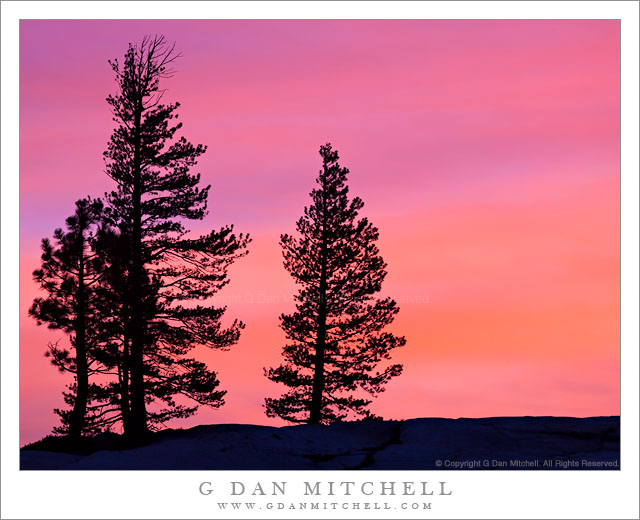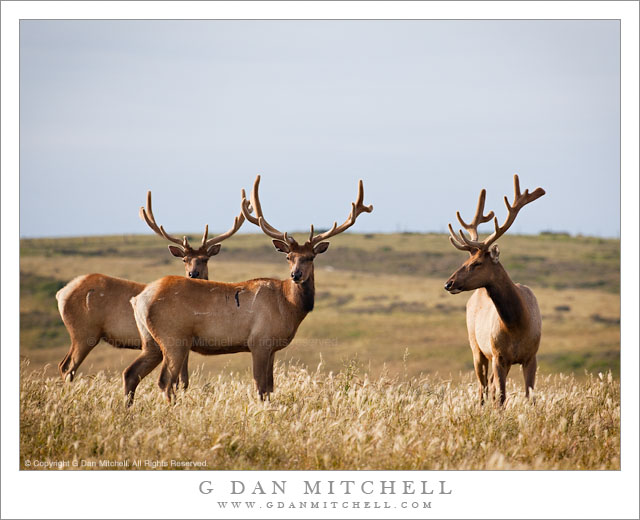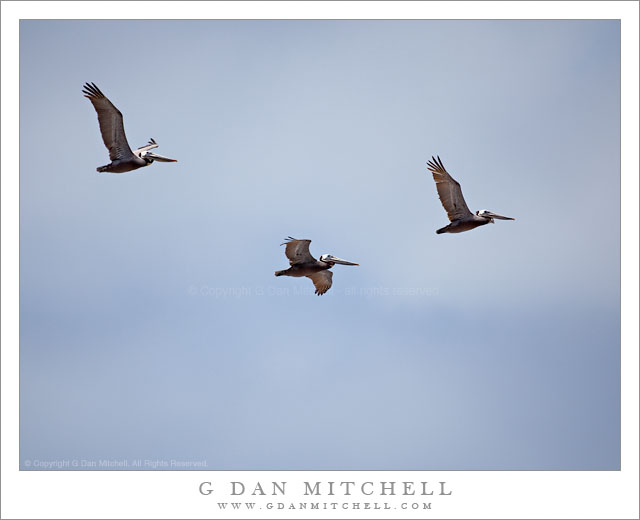Trees and Sunset Sky, Olmsted Point. Yosemite National Park, California. June 18, 2011. © Copyright G Dan Mitchell – all rights reserved.
Trees growing on granite silhouetted against a colorful sunset sky at Olmsted Point, Yosemite National Park.
This astonishing, magical light occurred just at and right after sunset on the evening of June 18, the day that Tioga Pass finally opened for the 2011 summer season. I earlier posted a vertical format photograph of much the same scene, though with slightly different light – the other photograph was made about a minute after this one and the conditions were changing very rapidly.
The photograph was made from the popular Olmsted Point overlook along the Tioga Pass Road (highway 120), with its well-known view of subalpine Tenaya Lake. Since I have recounted the story of this light in some detail in an earlier post, I’ll keep this description somewhat short, but here is the genera outline. Earlier in the evening I had come here to try to photograph Mount Conness with a long lens. Initially the light was very unpromising, but I observed some things that suggested the possibility of sunset light so I stuck around. Just before sunset, as the sun dropped near the horizon to the west, the light came from below to illuminate the thin, high clouds and produce an amazing color show.
To make the series of photographs of these trees I simply pivoted my tripod around from the direction it had been pointing, towards Mount Conness. The trees are somewhat sparse here since the granite domes and slabs cannot support many of them. The speed of light and color transition was remarkable. At one or more points, as the clouds picked up the sunset glow, the brightness of the light suddenly increased noticeably. The brightest color moved across the sky from east to west, and here the color was just beginning to diminish ever so slightly overhead as it continues to intensify to the west and closer to the horizon.
G Dan Mitchell Photography
Flickr | Twitter (follow me) | Facebook (“Like” my page) | 500px.com | LinkedIn | Email
Text, photographs, and other media are © Copyright G Dan Mitchell (or others when indicated) and are not in the public domain and may not be used on websites, blogs, or in other media without advance permission from G Dan Mitchell.




